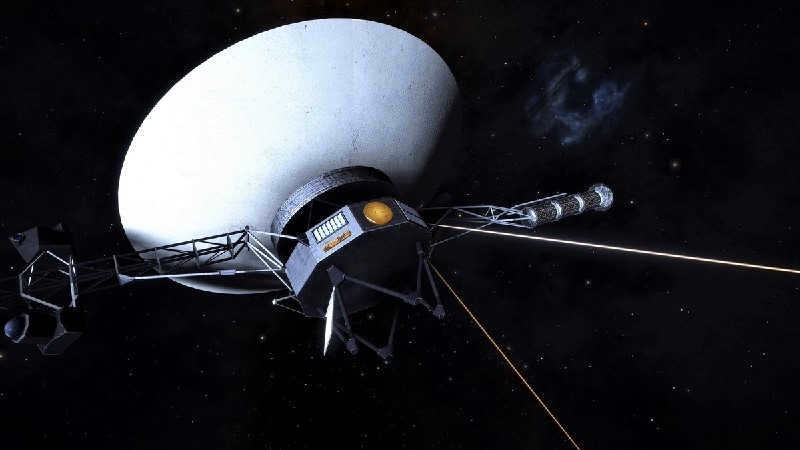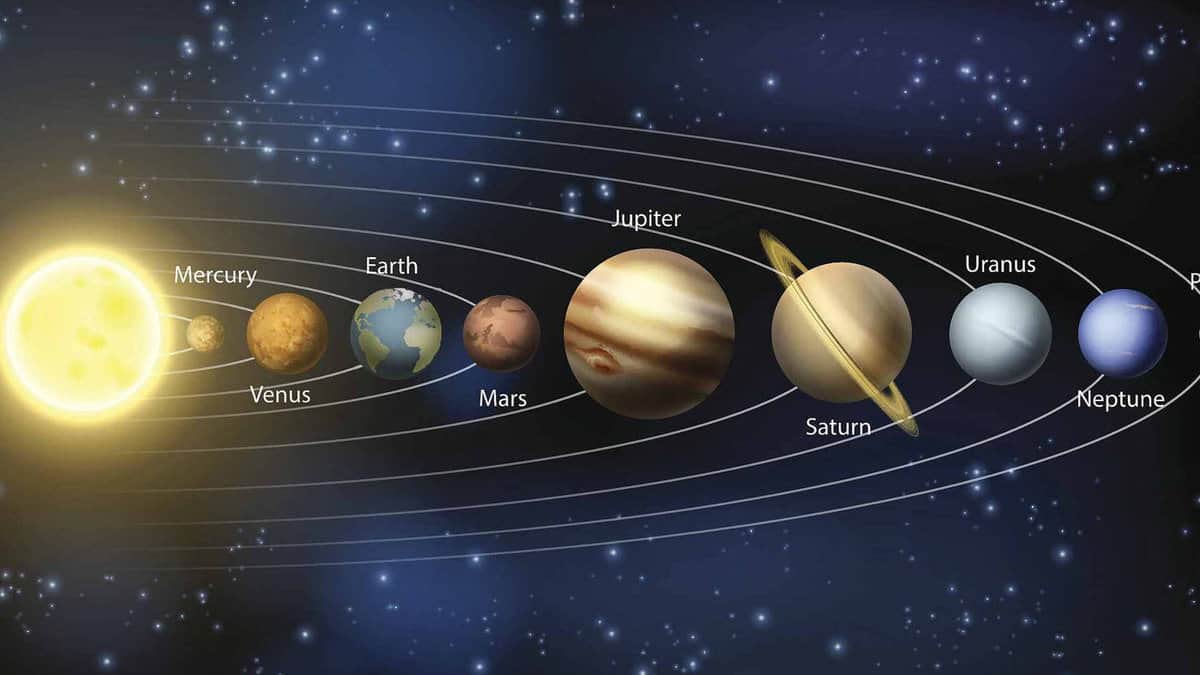Neptune, the eighth planet from the Sun, holds the title of being the most distant planet in our solar system. As a gas giant and a member of the outer solar system’s planet category, it marks the end of the planetary chain since Pluto is no longer considered a planet.
Due to its great distance, Neptune cannot be seen without the aid of instruments, and it was only relatively recently discovered. Its first observation occurred during the close approach of the Voyager 2 spacecraft in 1989. Let’s explore some interesting facts about the planet Neptune.
Fascinating information
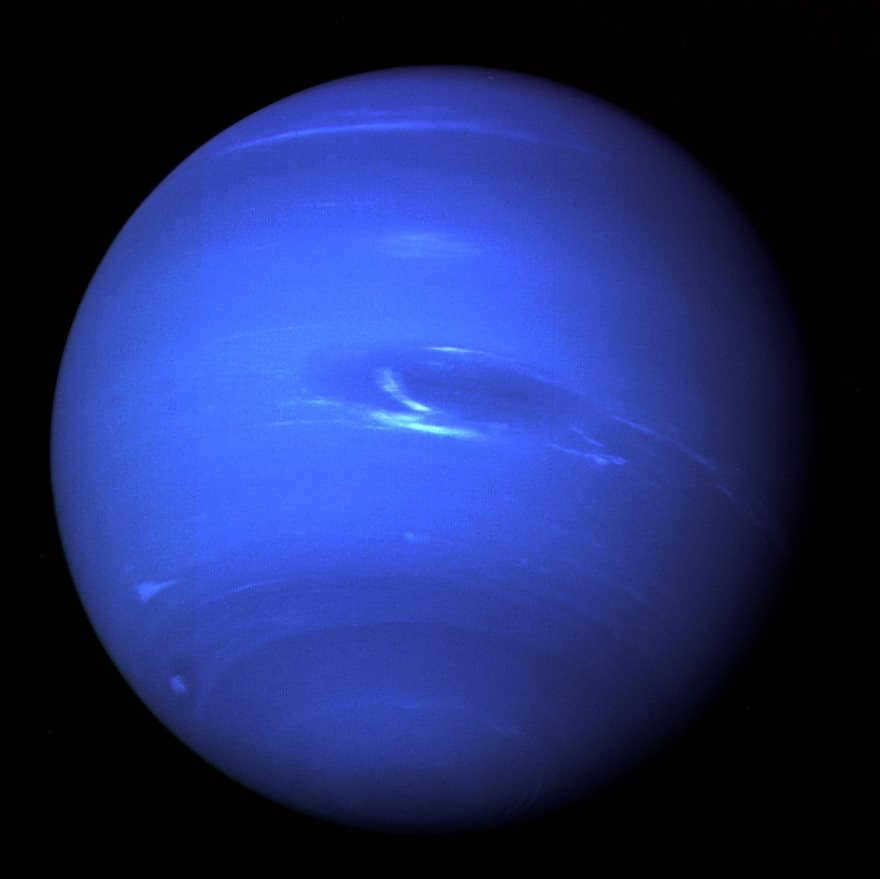
- Neptune was not discovered until 1846 and can only be observed with the help of instruments. Its position was calculated mathematically, and it was named after the Roman sea deity.
- Although smaller than Uranus, Neptune is more massive. Its atmosphere is composed of layers of hydrogen, helium, and methane gases, with water, ammonia, and methane ice below. The inner core is made of rock.
- Neptune appears blue due to the absorption of red light by its methane. The planet also exhibits constant drifting of high clouds.
- Notable features of Neptune include large storms and powerful winds. One of the most famous storms, the Great Dark Spot, occurred in 1989 and lasted for 5 years.
- Triton, an icy moon of Neptune, is the most captivating satellite in the system. It emits nitrogen and dust particles from its subsurface, possibly due to the planet’s gravitational pull.
- Neptune’s system received its first detailed images in 1989 when Voyager 2 made a close flyby. The Hubble telescope has also observed the planet.
Size, mass and orbit
Neptune is the fourth largest planet, with a radius of 24622 km, making it four times larger than Earth. It also has a massive mass of 1.0243 x 10 26 kg, which is 17 times greater than our own. In terms of its orbit, Neptune has a low eccentricity of only 0.0086. It is located at an average distance of 29.81 astronomical units (a.u.) from the Sun, but can reach a maximum distance of 30.33 a.u.
It takes 16 hours, 6 minutes and 36 seconds for Neptune to complete a sideric revolution, and it takes 164.8 years for the planet to complete an orbital passage. The tilt of Neptune’s axis is 28.32°, which is similar to Earth’s, resulting in similar seasonal changes on the planet. However, due to its long orbit, Neptune experiences a season that lasts for 40 years.
Neptune’s planetary orbit has an impact on the Kuiper belt. The gravity of the planet causes some objects in the belt to lose stability, creating gaps. The orbital path of Neptune passes through some of these empty areas. There is a resonance with the bodies in a ratio of 2:3, meaning that the bodies complete 2 orbital passes for every 3 passes made by Neptune.
The orbit and rotation of the planet Neptune
| 4,452,940,833 km 29.76607 a. e. |
| 4,553,946,490 km 30.44125 a. e. |
| 4,503,443,661 km 30.10366 a. e. |
The ice giant Neptune has celestial bodies known as Trojan bodies located at the Lagrangian points L4 and L5. Some of these Trojan bodies are remarkably stable, indicating that they were most likely formed in close proximity to Neptune rather than being gravitationally attracted at a later time.
Composition and surface
These celestial bodies are known as ice giants. They consist of a solid core made up of metals and silicates, a mantle composed of water, methane ice, and ammonia, and an atmosphere consisting of hydrogen, helium, and methane. The diagram provides a closer look at the internal structure of Neptune.
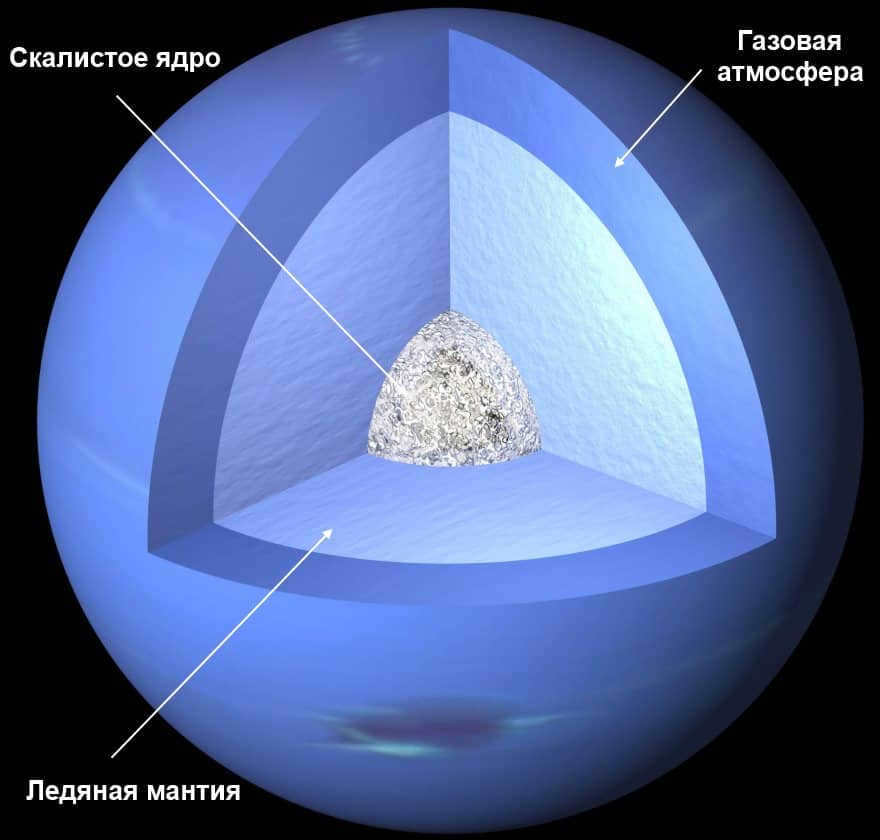
The structure inside Neptune
Neptune’s core contains nickel, iron, and silicates, with a mass 1.2 times that of Earth’s. The pressure at the core reaches 7Mbar, which is twice the pressure on our planet. The temperature of the atmosphere rises to 5400 K. At a depth of 7000 km, methane undergoes a transformation into diamond crystals, which then fall as hail.
The mantle of Neptune is 10-15 times the mass of Earth and is composed of a mixture of ammonia, methane, and water. This substance is referred to as ice, although it is actually a dense, luminous liquid. The atmospheric layer extends approximately 10-20% from the center.
In the lower layers of the atmosphere, there is an observable increase in concentrations of methane, water, and ammonia.
Satellites
Neptune has a total of 14 satellites, with all except one named after characters from Greek and Roman mythology. These satellites can be divided into two classes: regular and irregular. The regular satellites include Naiad, Thalassa, Despina, Galatea, Larissa, S/2004 N 1, and Proteus. These satellites are located closest to Neptune and follow circular orbits around the planet.
The regular satellites are positioned between 48,227 km and 117,646 km away from Neptune. With the exception of S/2004 N 1 and Proteus, these satellites complete their orbits in less than Neptune’s orbital period, which is approximately 0.6713 days. The regular satellites have varying sizes and masses, ranging from 96 x 60 x 52 km and 1.9 × 10^17 kg for Naiad to 436 x 416 x 402 km and 5.035 × 10^17 kg for Proteus.
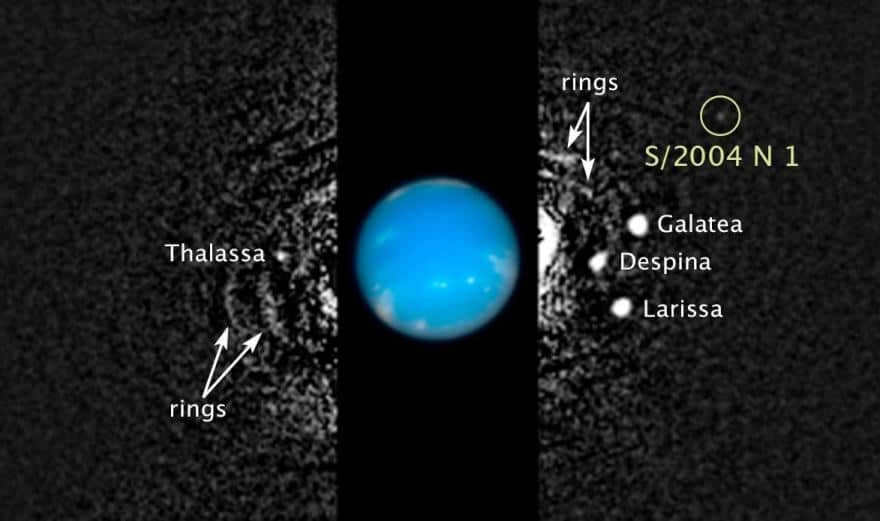
Hubble has documented the location of the S/2004 N 1 satellite, which is situated 4.8 billion km away.
With the exception of Proteus and Larissa, all satellites have an elongated shape. Spectral analysis reveals that they were created from a combination of water ice and dark material.
The irregular satellites follow inclined, eccentric, or retrograde orbits and exist at significant distances. The only irregular satellite that deviates from this pattern is Triton, which orbits Neptune in a circular path.
The list of irregular satellites includes Triton, Nereid, Galimeda, Sao, Laomedea, Neso, and Psamaph. In terms of size and mass, they are almost regular, ranging from 40 km in diameter and 1.5 × 10 16 kg in mass (Psamapha) to 62 km and 9 × 10 16 kg (Galimeda).
Triton and Nereid are given special attention due to being the largest irregular moons in the system. Triton alone accounts for 99.5% of Neptune’s orbital mass.
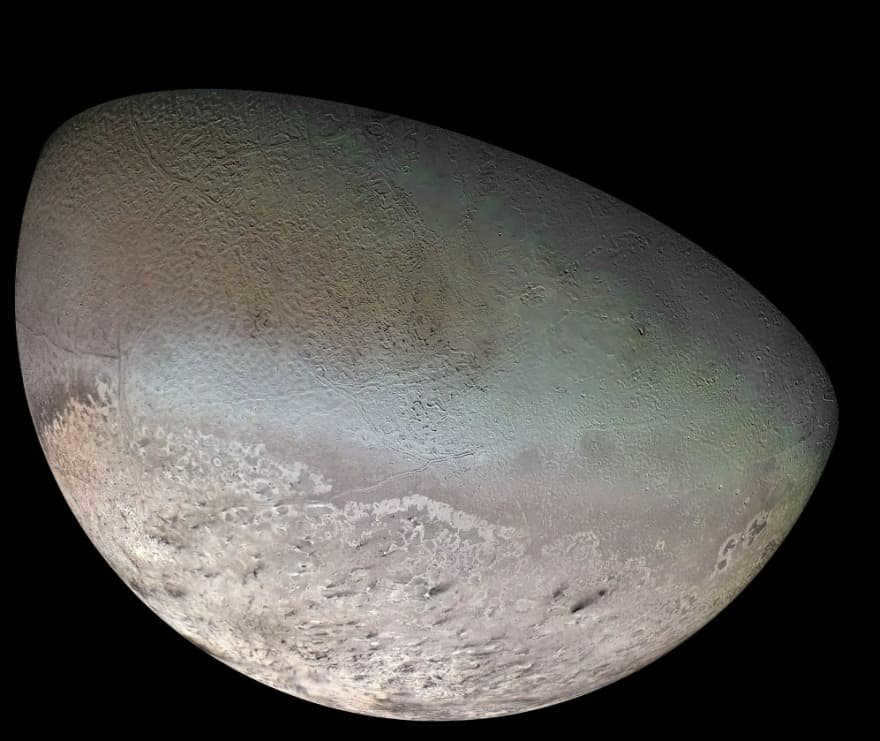
An image taken by the Voyager 2 spacecraft in 1989 shows a colorful mosaic of Triton, one of Neptune’s moons.
Triton and Nereid are two of Neptune’s moons that orbit closely to the planet. What makes them interesting is their unusual eccentricities: Triton has a nearly perfect circular orbit, while Nereid has the most eccentric orbit.
Triton, the largest satellite of Neptune, has a diameter of 2700 km and a mass of 2.1 x 10^22 kg. Its size is large enough to achieve hydrostatic balance. Unlike most moons, Triton moves in a retrograde and quasi-circular path. Its surface is composed of nitrogen, carbon dioxide, methane, and water ice, giving it a reddish appearance. With an albedo of over 70%, it is considered one of the brightest objects in the solar system. Additionally, Triton has its own atmospheric layer, which is a surprising feature for a moon.
The satellite’s density is 2 g/cm3, indicating that 2/3 of its mass consists of rocks. It is also possible that there is liquid water and an underground ocean. In the southern region, there are notable features such as a large polar cap, ancient crater marks, canyons, and cliffs.
Scientists believe that Triton was attracted by gravity and was previously thought to be a part of the Kuiper belt. Tidal forces have led to its close proximity to the planet. There is a possibility of a collision between the planet and the satellite in approximately 3.6 billion years.
Nereid is the third largest moon in the lunar family. It orbits in a prograde but highly eccentric path. Spectroscopic analysis has revealed the presence of ice on its surface. The irregular variations in apparent magnitude may be attributed to its chaotic rotation and elongated shape.
Atmosphere and temperature
Neptune’s atmosphere is composed primarily of hydrogen (80%) and helium (19%) with trace amounts of methane. The presence of methane causes the atmosphere to appear blue as it absorbs red light. The atmosphere can be divided into two main layers: the troposphere and the stratosphere. These layers are separated by a region known as the tropopause, which has a pressure of 0.1 bar.
Spectral analysis reveals that the stratosphere of Neptune is characterized by haziness caused by the accumulation of various compounds created through the interaction of UV light and methane. Notable compounds in the stratosphere include carbon monoxide and hydrogen cyanide.
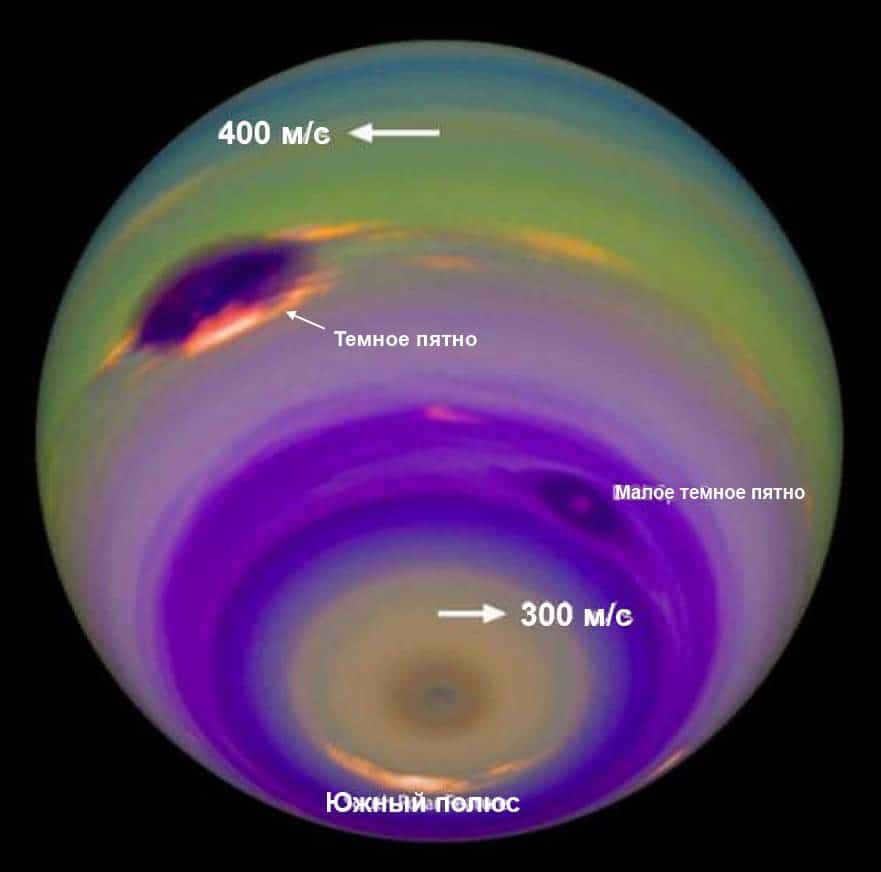
Neptune, in a false color representation, showcases various atmospheric characteristics as well as wind speeds.
The reason why the thermosphere on Neptune is scorching hot, reaching temperatures of up to 476.85°C, remains a mystery. Since Neptune is situated at an immense distance from its star, an alternative heating mechanism must be at play. It is possible that the atmosphere comes into contact with ions in the planet’s magnetic field, or it could be due to gravitational waves generated by Neptune itself.
Neptune, lacking a solid surface, experiences differential rotation within its atmosphere. The equatorial region completes one revolution every 18 hours, the magnetic field rotates every 16.1 hours, and the polar zone completes a rotation every 12 hours. This discrepancy in rotation rates gives rise to powerful winds. During the Voyager 2 mission in 1989, three large-scale winds were documented.
The initial storm covered an area of 13,000 x 6,600 km and resembled the Great Red Spot on Jupiter. In 1994, the Hubble telescope attempted to locate the Great Dark Spot, but it was not present. However, a fresh storm had emerged in the northern hemisphere.
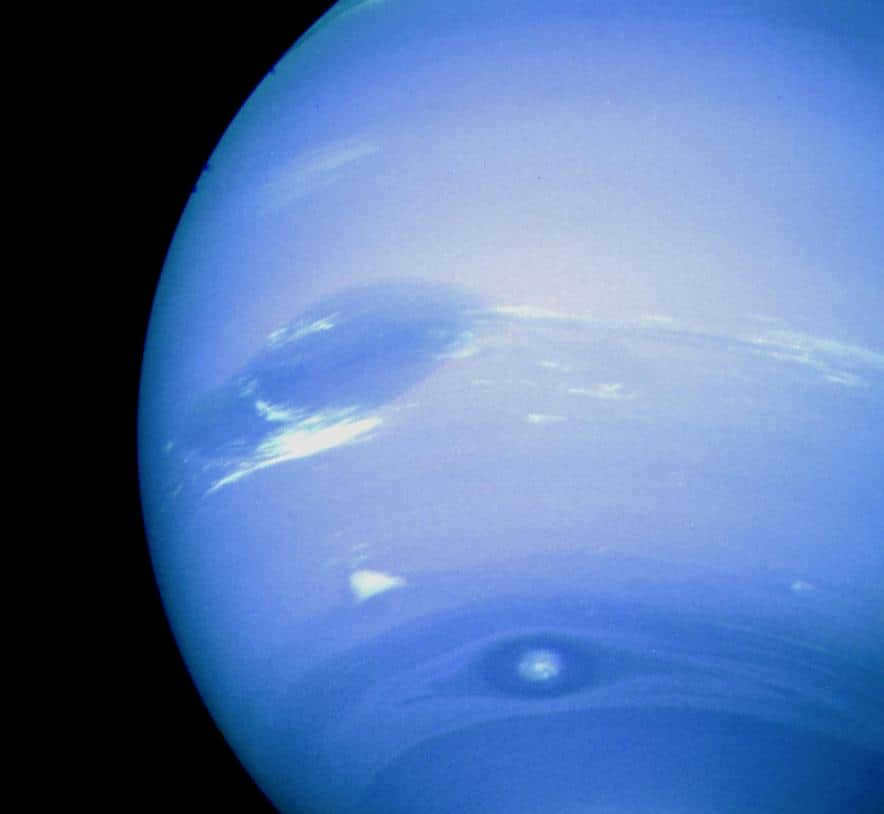
The Voyager 2 spacecraft captured the impressive Great Dark Spot (top left), along with the Scooter storm (middle) and the Small Dark Spot (bottom right).
Scooter is described as another storm with a covering of light clouds. These storms can be found to the south of the Great Dark Spot. The Little Dark Spot, also observed in 1989, initially appeared completely dark. However, upon closer inspection, the spacecraft was able to detect a bright core within it.
The rings of Neptune
Neptune, the eighth planet in our solar system, boasts a total of five rings, each named after prominent scientists who made significant contributions to the field. These rings, namely Halle, Leverrier, Lascelles, Arago, and Adams, are composed of a combination of dust particles (making up approximately 20% of their composition) and small rocky fragments. Due to their lack of brightness and varying size and density, these rings can be quite challenging to detect.
The discovery of Neptune’s rings can be attributed to the pioneering work of Johannes Galle, who was the first to observe the planet through a magnifying device. Galle’s observations revealed that the ring closest to Neptune, known as Halle, is situated at a distance of approximately 41,000 to 43,000 kilometers away from the planet’s surface. On the other hand, Leverrier, the second ring, is relatively narrow with a width of just 113 kilometers.
Lassell’s ring, the third ring in the sequence, is the widest of Neptune’s rings. It is located at a distance of approximately 53,200 to 57,200 kilometers from the planet’s center and spans a width of 4,000 kilometers. Interestingly, it was Lassell himself who discovered Triton, Neptune’s largest moon, just 17 days after the planet’s initial discovery.
Arago’s ring, positioned at a distance of 57,200 kilometers, stretches out for about 100 kilometers. This ring is named after François Arago, who served as a mentor to Leverrier and played an active role in the planet’s controversy during its early exploration.
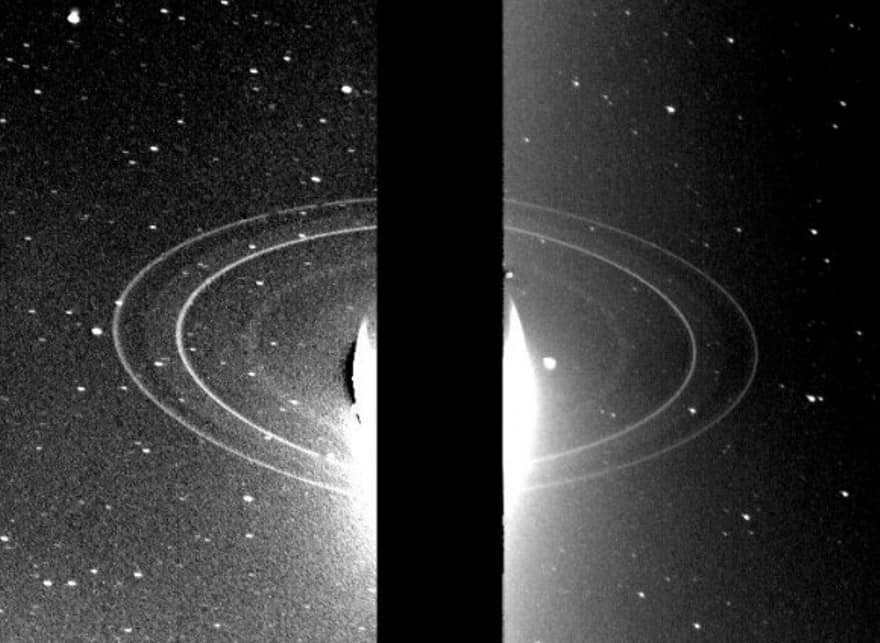
Neptune’s rings were observed by Voyager 2 in 1989
The rings are composed of dark organic compounds and contain a significant amount of dust. They are believed to be relatively young formations.
History of the study
Neptune was not officially discovered until the 19th century. However, upon close examination of Galileo’s sketches from 1612, it is evident that the dots he depicted actually indicate the presence of the ice giant. Thus, the planet was previously mistaken for a star.
In 1821, Alexis Bouvard created charts illustrating the orbital path of Uranus. However, upon further analysis, discrepancies between the charts and the actual observations were noted. This led the scientist to theorize the existence of a large celestial body nearby that was affecting Uranus’ orbit.


Neptune was discovered at the Berlin Observatory.
John Adams began a detailed study of the orbital passage of Uranus in 1843. At the same time, Urbé Leverrier was working independently in the 1845s and 1846s. He shared his findings with Johann Halle at the Berlin Observatory, who confirmed the presence of something significant nearby.
The discovery of Neptune sparked controversy over who should be credited with its discovery. However, the scientific community recognized the contributions of both Leverrier and Adams. In 1998, it was suggested that Leverrier had made a greater contribution.
Initially, Leverrier suggested naming the entity after himself, a suggestion that sparked considerable outrage. However, his subsequent proposal, Neptune, ultimately became the accepted name. The reason for this acceptance lies in its conformity to the established naming convention. Presented below is a surface map of Neptune.
Neptune’s Surface Map

Click on the picture to see it bigger
Position and Movement of Neptune
Currently, there are a total of eight planets in our solar system. The first four, which are closer to the Sun, are primarily made up of metals and silicates, while the outer planets are predominantly gaseous.
Neptune is the most recently discovered eighth planet in the solar system. It was named after the Roman god of the sea. In terms of size, Neptune is much larger than Earth, with its equatorial diameter measuring nearly four times that of our planet, and its mass surpassing Earth’s by a factor of 17.2. Its existence was initially predicted through mathematical calculations in the 19th century, and later confirmed by an astronomer.
Here are 10 fascinating facts about Neptune, a gas giant that is still being explored by scientists.
1. Neptune has the most powerful winds in the entire solar system.
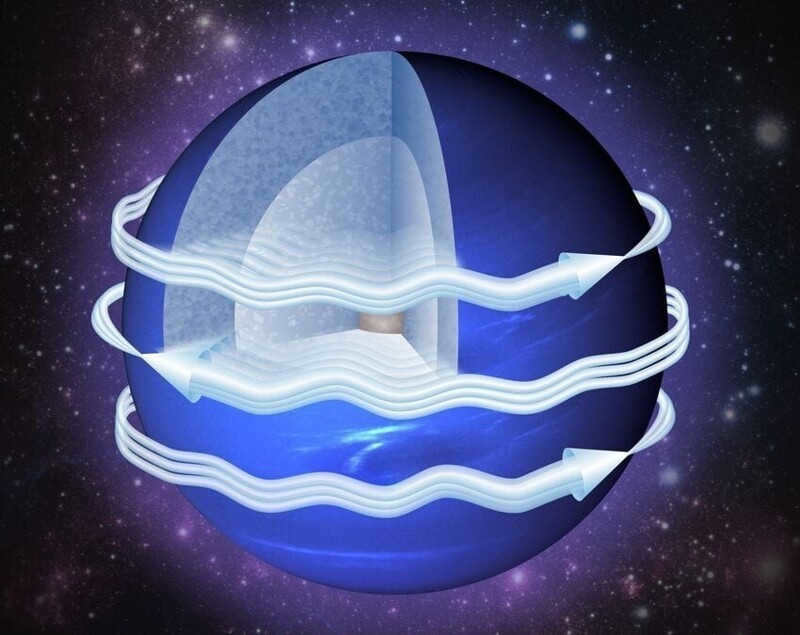

The atmosphere of this planet is home to some of the most powerful winds in the entire solar system. Based on research, scientists have discovered that the speed of air movement on Neptune can sometimes reach speeds of 2000-2100 km/h, surpassing even hurricanes in intensity.
These high wind speeds can be attributed to the low temperatures on Neptune, as the flow of liquid gases with negative temperatures reduces friction and allows for the wind to reach such incredible speeds by minimizing resistance.
Furthermore, there are significant temperature variations between Neptune’s core and its surrounding atmosphere, which also contribute to the formation of these strong air currents.
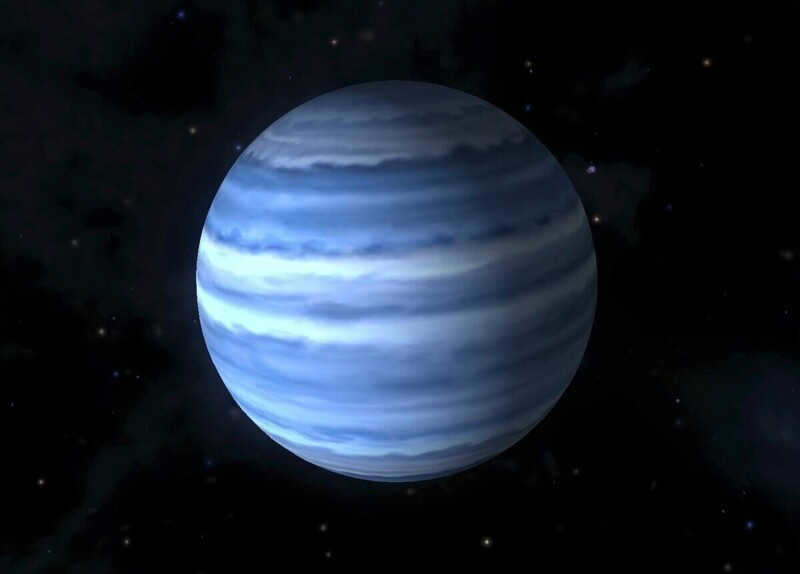
With temperatures dropping to -221ºC, Neptune is renowned as the coldest planet in our Solar System, particularly in its upper atmospheric layers. This bone-chilling climate makes it impossible for any form of life to survive, rendering the notion of an inhabited icy planet utterly ridiculous.
8. The sole celestial body found via mathematical computations
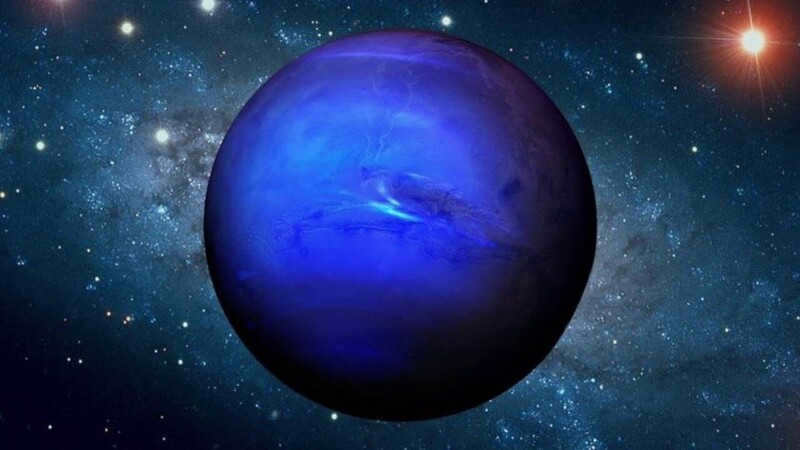
The official discovery of Neptune took place on September 23, 1846. What makes Neptune unique is the fact that it was the result of mathematical calculations.
Scientists noticed an unusual orbit in the motion of Uranus, which went against the laws of celestial bodies. This observation led to the hypothesis that there might be another planet in our solar system that had yet to be discovered.
Mathematicians W. Leverier and J. Adams conducted the necessary calculations and determined that indeed there was a planet in a specific region of the heliocentric system.
The available instruments during that period were insufficient to provide concrete evidence of the planet’s existence, thus the confirmation only existed in written form. It took several more years for astronomers to finally confirm the actual existence of Neptune.
7. Possesses a total of five rings
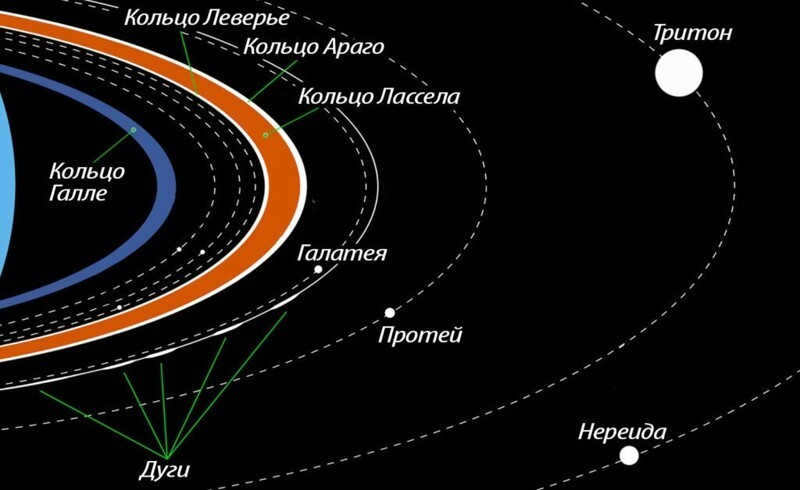
Up to this point in time, it has been determined that the planet possesses a total of five rings. Each of these rings has been given the name of the scientists who played a role in the discovery of this particular planet: Leverrier, Adams, Galle, Lascelles, and Arago. In comparison to Saturn’s rings, Neptune’s rings are not as wide, which is why they are not typically depicted alongside the planet in diagrams and photographs of the solar system.
The composition of Neptune’s rings consists of dust particles that are on the scale of microns (accounting for approximately 20% of the overall volume) as well as small rocks and fragments that are of negligible size. The organic elements within the rings have taken on a darker hue as a result of the radiation present in space, making the rings themselves rather challenging to observe.
Neptune’s ring system shares similarities with the ring system of Uranus, but it is fundamentally distinct from the icy rings that encircle Saturn.
6. There is no specific surface on the planet
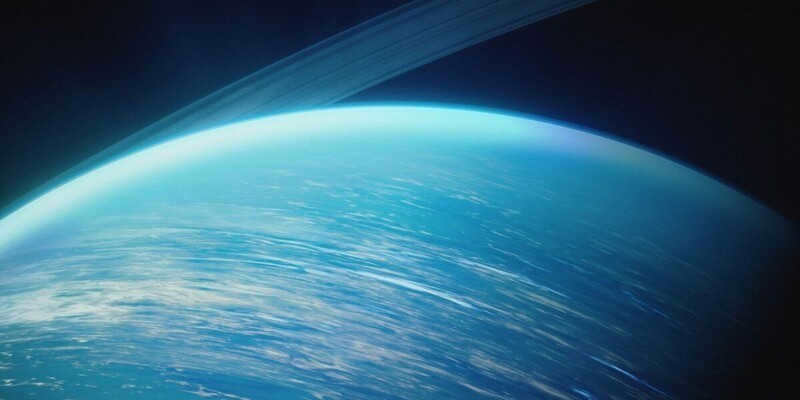
Neptune, known as a gas giant, lacks a solid surface. It is hypothesized by scientists that Neptune consists of an icy gaseous mass encompassing a rocky nucleus.
Attempting to set foot on such an intangible surface is simply implausible, leaving telescopes and space imagery as the sole means of exploration.
5. There exists a solid inner core
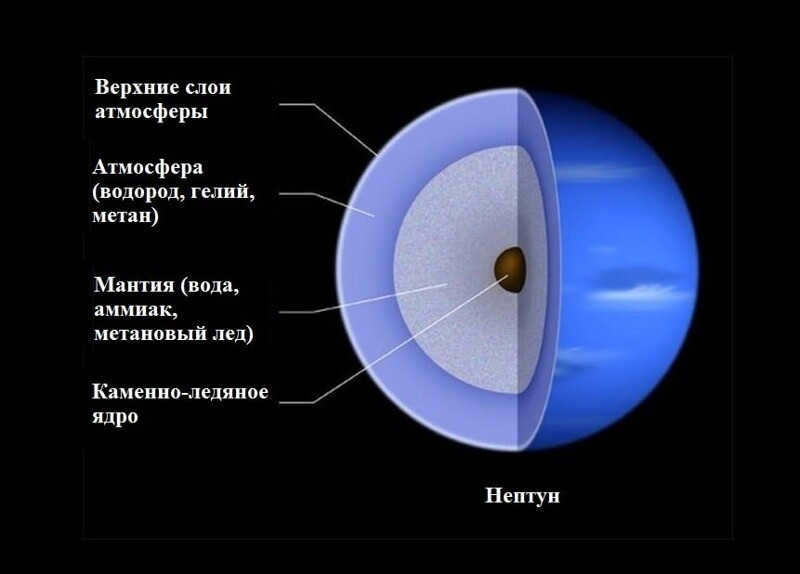
Neptune contains a solid center composed of metals and silicates. Enveloping this center are the mantle and the atmosphere. The mantle is comprised of masses of methane, ammonia, and water ice, while the atmospheres consist of three different elements: helium, methane, and hydrogen.
Remarkably, the planet’s core has the extraordinary capacity to generate heat despite the frigid temperatures of the surrounding atmosphere.
4. Gas Giant
Gas giants are massive planets primarily composed of hydrogen and helium. They are often referred to as “failed stars” because they do not have enough mass to sustain nuclear fusion in their cores. These planets have thick atmospheres and lack a solid surface. Gas giants can have different colors, with bands of clouds and storms visible on their surfaces. Some well-known gas giants in our solar system include Jupiter and Saturn. Gas giants are fascinating objects of study for astronomers, as they provide insights into the formation and evolution of planetary systems.
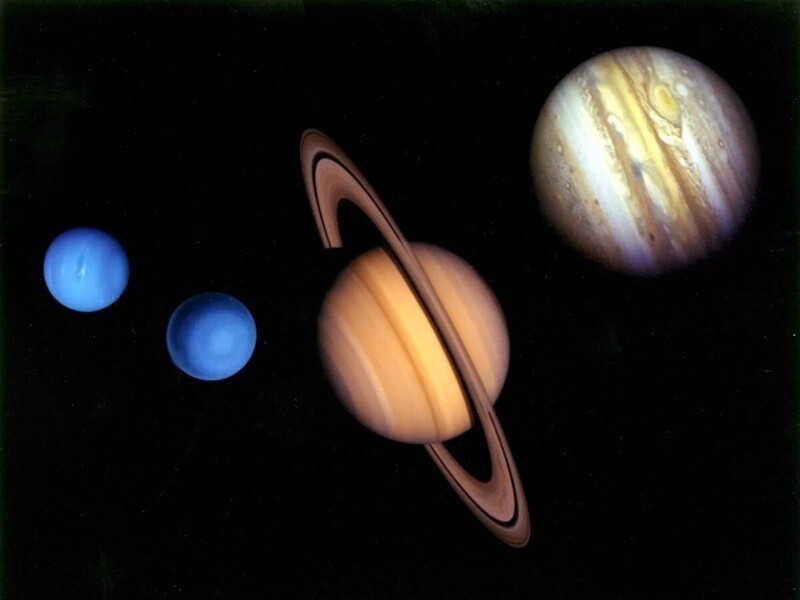
Out of the four gas giant planets in the system, Neptune is the smallest in size. It has a radius of just over 24,700 kilometers at the equator. However, it is the most massive planet among them, making it the densest gas giant in the entire planetary system.
Astronomers have observed that the planet’s bright blue color is a result of its methane gas atmosphere and the presence of an unidentified substance.
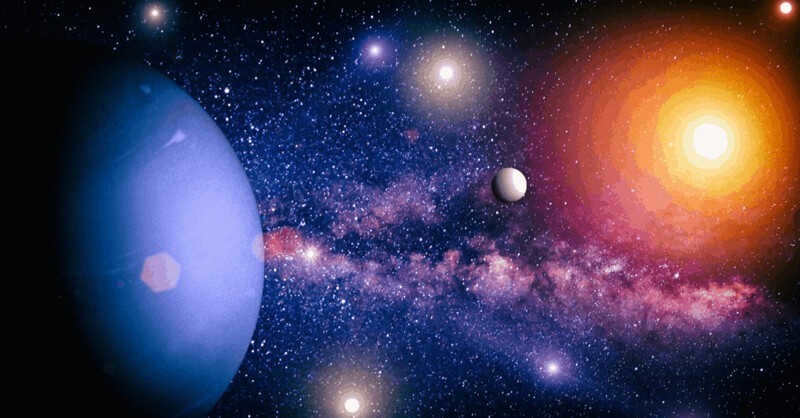
One fascinating fact is that Neptune is experiencing a rise in temperature. Despite being surrounded by icy masses, the planet’s rocky core heats up to a scorching 7000 degrees. As a result, Neptune emits 2.6 times more heat than it receives from the Sun. Scientists are still unable to explain this extraordinary heating ability of the celestial body.
2. Triton: The Remarkable Satellite
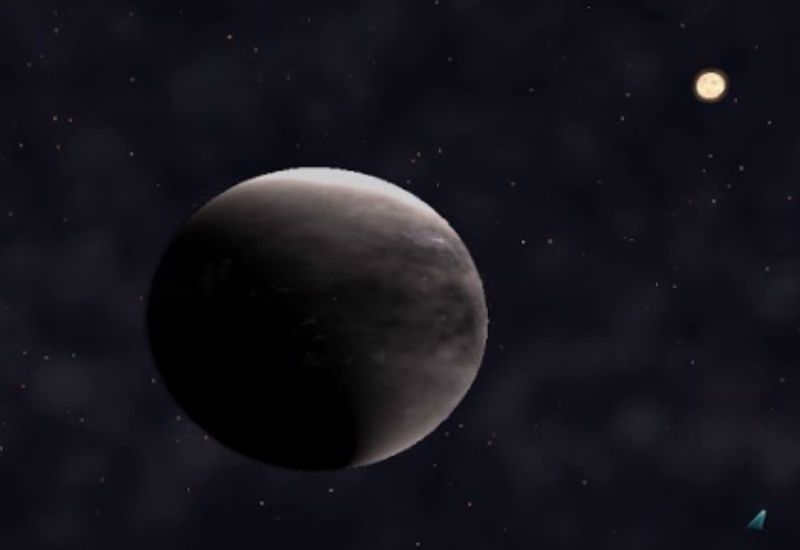
Neptune has multiple moons or satellites. The largest among them is known as Triton. All of the planet’s moons were formed in close proximity to each other and follow similar paths.
However, Triton moves in the opposite direction compared to the other moons, also known as a retrograde orbit. This unique motion led scientists to propose the idea that Neptune captured Triton, as it was drawn in by the planet’s powerful gravitational field and became locked in a synchronized rotation. Over time, Triton is gradually spiraling closer to the surface of Neptune.
1. “Blemishes” on the surface of the planet
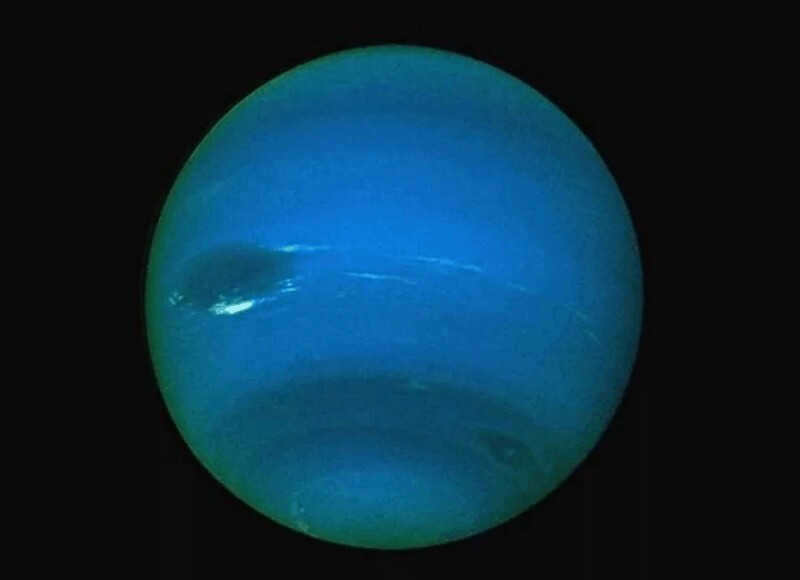
From time to time, telescopes capture the occurrence of “dark spots” on the planet’s surface, which have the peculiar characteristic of appearing and vanishing.
The initial sighting of such a “dark spot” was documented in 1989 by the Voyager 2 spacecraft, which remains the only spacecraft to have visited Neptune. During its close encounter with the planet, Voyager 2 detected the presence of a patch with a dark coloration on Neptune’s surface.
A few years later, in 1994, the Hubble Space Telescope observations revealed that the spot had vanished, only for a similar darkening to emerge elsewhere on the planet’s surface at a later time.
Scientists have put forward a hypothesis that the dark spots on Neptune are formed due to the powerful winds on the planet, which create storms and funnels with their incredible speed. These funnel-holes move across the planet, eventually dissipating. A preliminary analysis of Neptune’s atmosphere indicates that these storm systems are responsible for the appearance of these dark spots.
Everyone knows that there are only 8 planets in our solar system. But have you ever wondered what lies beyond? Other star systems also have their own planets, known as “exoplanets”. And guess what? Some of them are actually habitable! These exoplanets were discovered much later than the ones in our system, and scientists are constantly finding new ones. So, let’s dive into the fascinating world of these extraordinary exoplanets!
What are exoplanets
Exoplanets, also known as extrasolar planets, are celestial bodies that orbit stars outside of our solar system. These planets have their own unique characteristics and are influenced by the gravitational force of their respective stars.
To learn more about the different theories regarding the origin of Earth, please refer to a separate article dedicated to this topic.
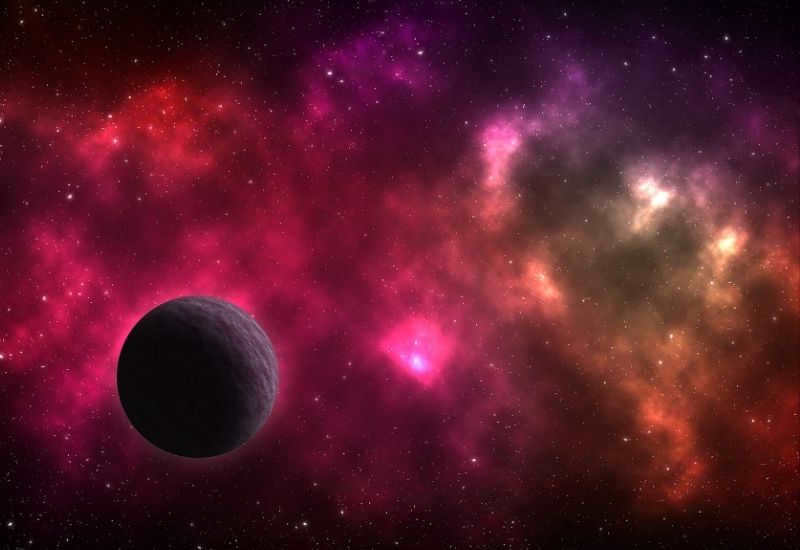
The Characteristics of Exoplanets
With the advancement of exoplanet detection programs, researchers are discovering these planets in a growing number of stars. However, due to the complexities of detection, determining the exact number of exoplanets around each star can be challenging.
While the program primarily focuses on identifying gas giant planets, only a small fraction of the star systems examined so far contain such a planet. Scientists believe that the majority of planets are likely much smaller in size and more similar to Earth or Mars than to a massive planet like Jupiter.
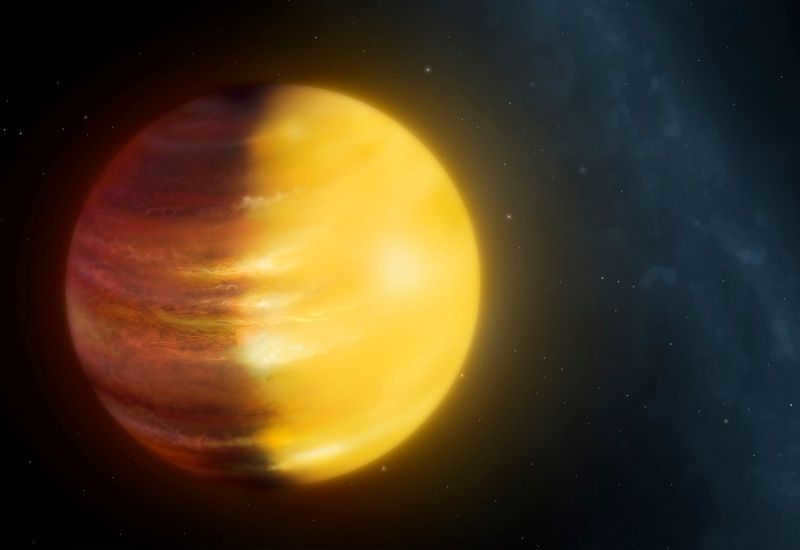
The continuous quest and investigation of exoplanets ignite the optimism of discovering evidence of alien civilizations. And although the potential for any of these planets to be suitable for life relies on numerous factors, researchers approximate that there could exist up to 11 billion potentially habitable planets solely within the Milky Way.
Exoplanet Temperature and Composition
The temperature of exoplanets is determined by several factors, including the amount of light energy they receive from their host star. These factors include the size of the exoplanet, its reflectivity, and its distance from the star.
Various parameters can be measured to determine the composition of exoplanets based on the method of their discovery. By analyzing these data and considering the average density of matter on the exoplanet’s surface, astrophysicists can make calculations.
Exoplanets with low density are primarily composed of gases and volatiles. Those with medium density are likely to have water, while exoplanets with high density, similar to Earth, have predominantly rocky surfaces with the potential for ice presence as well.
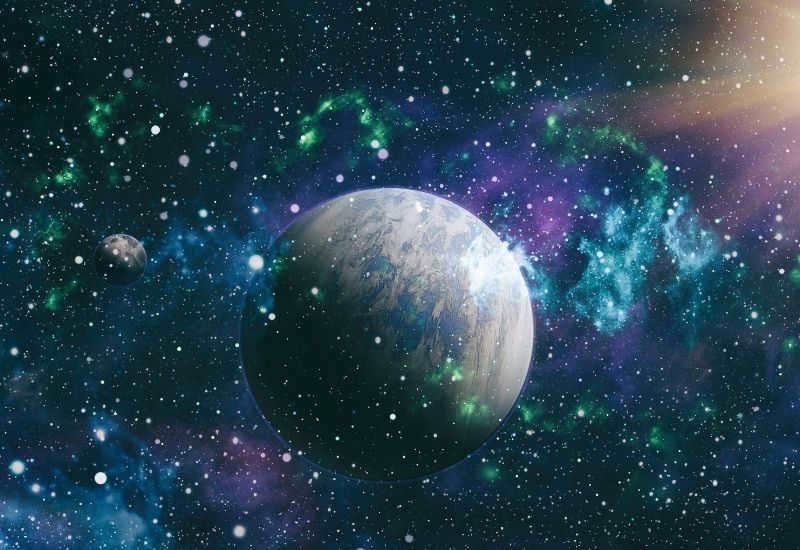
By using instruments, it is possible to detect the presence of an atmosphere on a planet as well as determine its composition. Many planets in close proximity have been found to contain different gases, including carbon dioxide, water vapor, and methane.
Characteristics of exoplanets in terms of their physical properties
Initially, the exoplanetary systems that were identified consisted of a limited number of planets with small orbits and rapid rotation. The majority of these planets were classified as gas giants, despite their orbits being even smaller than that of Mercury.
Advancements in technology have enabled scientists to refine their methods of detecting exoplanets, resulting in the discovery of planetary systems that resemble our own Solar System. However, a notable difference is the presence of gas giants located in close proximity to the host star.
Over the past 15 years, there has been an increasing number of exoplanets that have been observed with similarities to Earth in terms of mass and size.
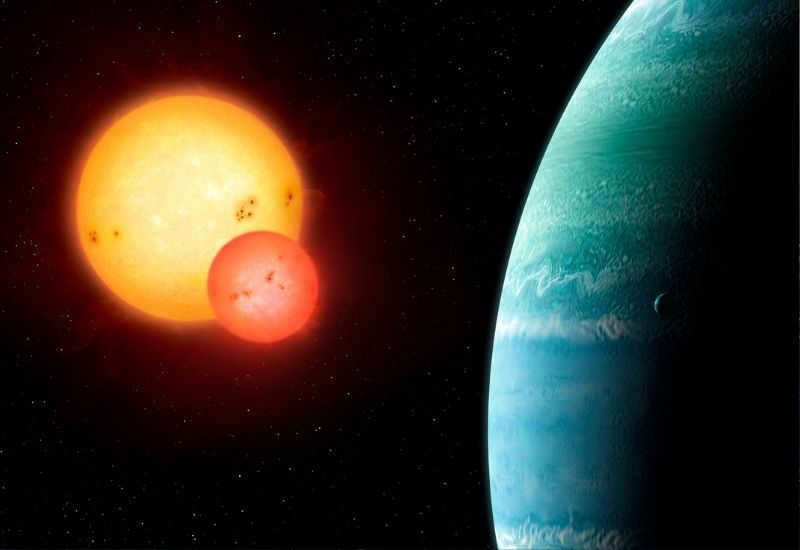
The examination of exoplanets has completely changed the perspective of scientists regarding the development of planetary systems. It is now believed that the large planets that exist in close proximity to their stars were actually formed at much greater distances, but gradually migrated closer as they accumulated mass. This theory is supported by the correlation between a planet’s composition and the mass of its parent star. According to this hypothesis, stars with greater mass tend to have planets with a higher concentration of heavy metals in their composition.
Categories of exoplanets
At present, over 5000 exoplanets have been identified. These celestial bodies are located in various star systems across the universe.
They can be classified into four distinct categories:
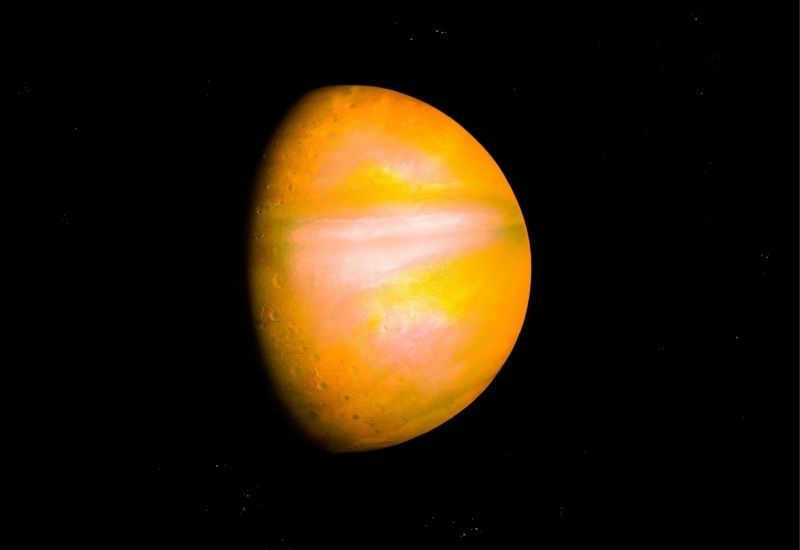
- Gas giants – these are planets that are similar in size and mass to Jupiter and Uranus, but they may not have rings.
- The so-called “Neptune worlds.” These planets are also similar in density to gas giants, but they are much smaller in size.
- Super-Earth class planets have a density similar to our planet. They are larger than Earth in size and mass, but smaller than Neptune.
- The Earth-like planets are the most interesting to study. These exoplanets have properties (such as mass, size, and density) that are very similar to Earth.
Discovering New Exoplanets: The Search and Detection Process
Until recently, the task of finding exoplanets in distant star systems was considered highly challenging for scientists. Due to their minuscule size and low brightness, the majority of planets tend to go unnoticed in close proximity to their respective stars.
Even with the advancements made in recent years, astrophysicists still face significant difficulties in identifying potential exoplanets. They must push the limits of their available equipment to accurately pinpoint these celestial bodies.
Tools for Searching
It is extremely challenging to detect planets in other star systems using only a telescope because the light from their own stars overwhelms them. So far, only around a dozen exoplanets have been directly observed, and they were much larger than Jupiter and located far from their stars.
As a result, scientists utilize several orbiting satellites in addition to ground-based observatories to conduct research. The most well-known of these satellites are TESS and Kepler.
The satellite “TESS” was specifically launched into orbit in 2018 with the goal of discovering and observing exoplanets. It accomplishes this by employing the transit scanning method.
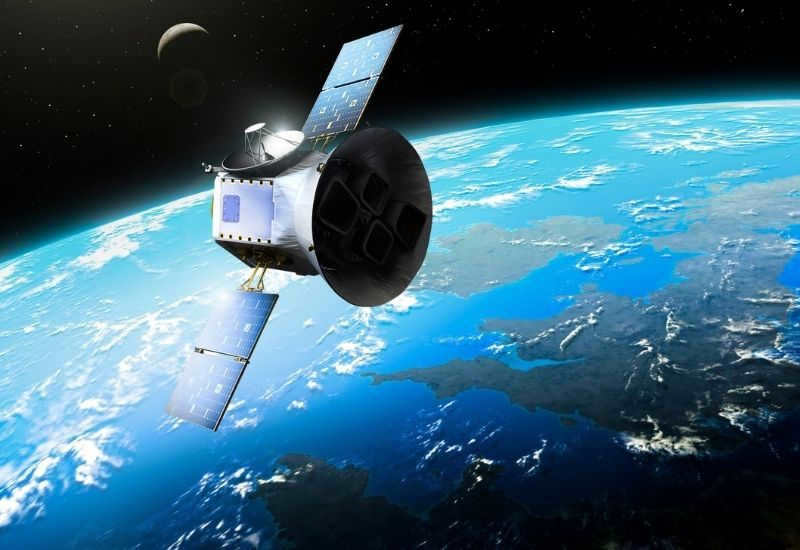
The “Kepler” satellite is the most ancient spacecraft engaged in the study of exoplanets. It was sent into Earth’s orbit in 2009 and is equipped with its own telescope featuring a mirror radius of approximately 1 meter. Utilizing this instrument, scientists are able to observe over 600 planets that bear a resemblance in size to Earth.
Furthermore, the “SuperWASP” terrestrial telescope, which is part of the project, has proven to be highly successful. It operates two observatories positioned in the United States and South Africa. With the assistance of this telescope alone, researchers have discovered a minimum of 70 exoplanets.
Methods of Exoplanet Detection
Aside from direct observation, which is not very effective for observing exoplanets, scientists employ five other methods to detect them:
- The Doppler method is a technique used to measure the rotational speed of a star. It is not effective for detecting small planets (with a mass similar to that of Earth) as their influence on the star’s motion is not significant enough. Likewise, it cannot identify planets with very slow rotations (taking more than 10 years to complete one revolution). The principle behind this method lies in the fact that a planet orbiting a star affects its magnetic field, causing it to move. This phenomenon, known as the Doppler shift, can be used to calculate the amplitude of motion of the star-planet system, as well as the planet’s velocity, mass, and orbit shape. Furthermore, observations can reveal the direction of the orbit in relation to Earth. The Doppler method is widely employed in exoplanet research due to its ability to provide a diverse range of data.
- The transit method is a technique that involves measuring the brightness of a star in order to detect exoplanets. By observing the changes in light flux when a planet passes in front of a star, scientists can gather valuable information about the planet’s size, atmosphere, and even its density. This method is especially effective for planets whose orbits are aligned with our line of sight from Earth. In fact, it is the second most successful method for discovering exoplanets, with nearly 200 confirmed detections so far.
- Gravitational microlensing technique. Despite not being the most efficient approach, gravitational microlensing offers the opportunity to identify the most remote and diminutive (reaching the size of Earth) exoplanets. The principle behind this method involves the presence of an intermediary star, acting as a lens, situated between the observed star system and the observer. The lensing star’s magnetic field concentrates the incoming light emitted by the star. Nevertheless, if the lensing star itself possesses planets, it could potentially disrupt the achromaticity. To date, thirteen exoplanets have been detected utilizing this particular technique.
- Radio observations of pulsars. It has been confirmed that there are planets orbiting pulsars, although they are quite rare. Up to this point, scientists have already found at least 5 exoplanets in these systems. The presence of a planet in the pulsar’s orbit can cause distortion in the radio signals emitted by the pulsar due to its powerful radio radiation. However, for this method to be effective, the planet must be positioned between the pulsar and Earth, which significantly narrows down the search.
10 habitable exoplanets
Scientists have already discovered thousands of exoplanets, although this is only a small fraction of the total number of planets in the universe. However, experts believe that some of these exoplanets may be capable of supporting life.
Tau Kita E.
Tau Kita E is an exoplanet named after its parent star Tau Kita. It is located 12 light years away from Earth and is the fifth farthest star in its system. With a mass over 6 times that of Earth and a size about 2.5 times larger, it is classified as a Super Earth. The star’s exoplanet system consists of 6 planets, but only one of them is potentially habitable.
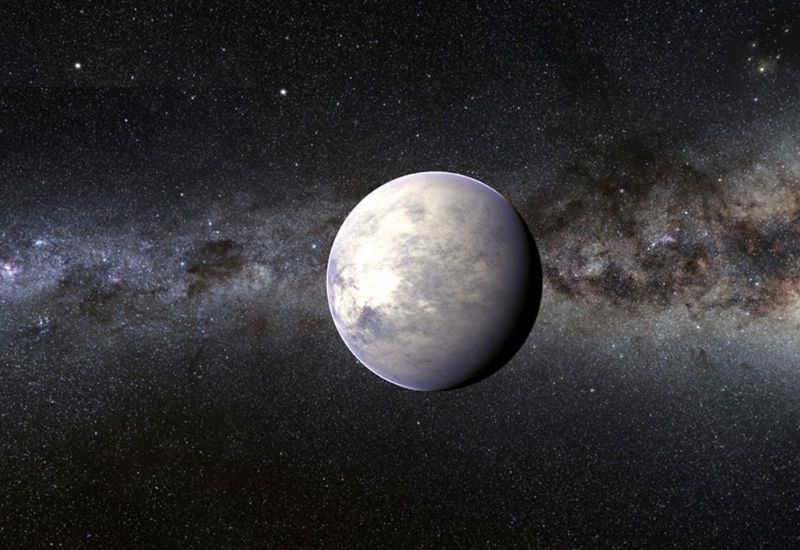
Scientists are currently unable to make definitive assumptions about the atmosphere of this planet due to limited information. However, if the atmosphere is similar to that of Earth, the average temperature on the planet is estimated to be around -40 degrees Celsius. This temperature range could support organisms that thrive in cold conditions. In the event that the planet’s atmosphere is denser, the temperature could increase to 0-50 degrees Celsius, providing enough warmth for the formation of complex organic species.
Kepler 438b.
Situated at a distance of 470 light-years from our solar system, Kepler 438b is an exoplanet whose star is characterized by being half the mass and brightness of the Sun.
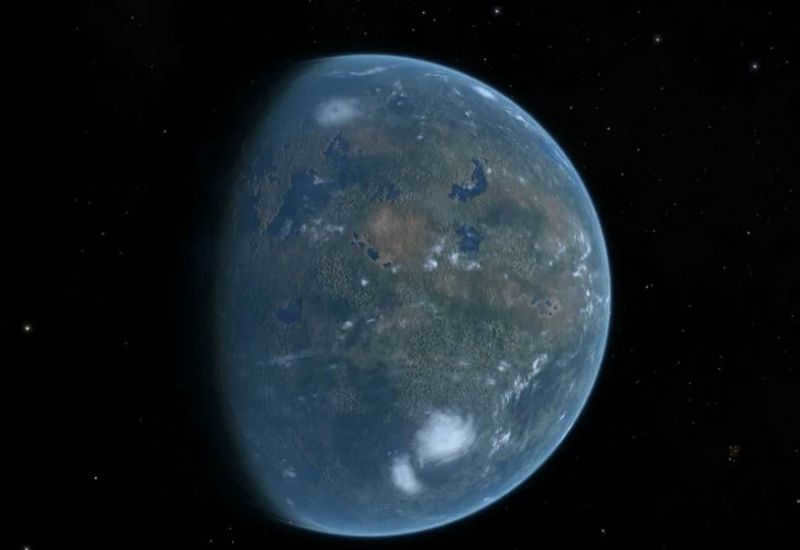
This exoplanet stands out not only for its similarity in mass and size to Earth, but also for its proximity to its star, which results in climatic conditions that are more akin to those of our own planet.
However, the main issue lies in the fact that its star is a red dwarf, which periodically emits immense amounts of ultraviolet radiation into space, causing harm to both the planet’s atmosphere and its surface.
This celestial body is classified as a Super-Earth due to its considerable mass, exceeding that of Earth by over 3 times. It is situated at a distance of 23 light-years from the solar system. Despite not receiving an equivalent amount of energy from its host star as Earth does from the Sun, scientific experts propose that, given a sufficient presence of carbon dioxide in its atmosphere, it is plausible for the planet to possess liquid water.
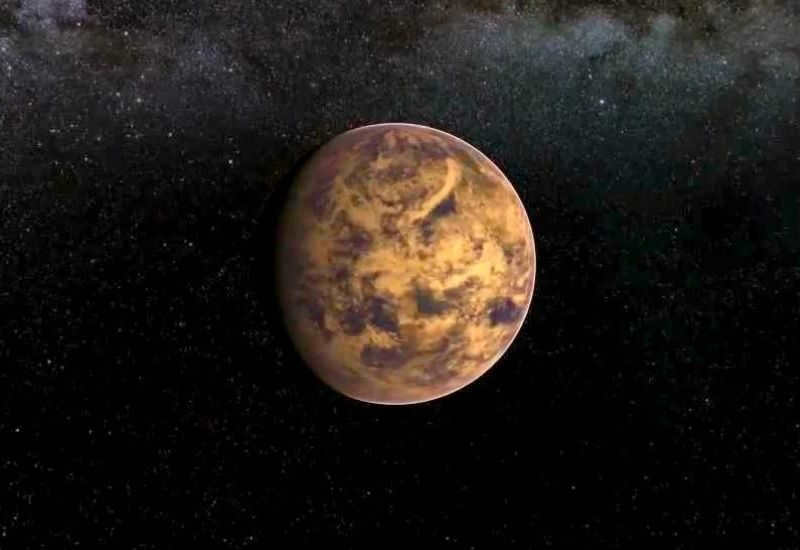
Kepler 186f: A Planet with a Similar Radius to Earth
The star system Kepler-186, located 492 light-years away from our solar system, is home to a planet with a radius closest to that of Earth. The discovery of this planet required three years of continuous observation.
In comparison to our sun, the star Kepler-186 is significantly smaller and emits much dimmer light, approximately 25 times less. Consequently, its planets are positioned much closer together. Although the orbit of Kepler 186f is only slightly larger than that of Mercury in our solar system, it is situated within the habitable zone. In terms of its relative position to the star, it is similar to that of Mars in our solar system.

Up until now, the mass and density of this planet have remained a mystery, leaving scientists to speculate on its possible range of 0.32 to 3.77 Earth masses.
In the past, the star of this distant planet emitted intense ultraviolet radiation, which could have led to the depletion of its atmosphere and the loss of hydrogen and helium from its surface.
Recent research has instilled a growing confidence among scientists that this planet may experience seasons similar to those on Earth. This not only makes it potentially habitable, but also significantly increases the likelihood of it being home to its own unique life forms.
Kepler 62f
Situated in the Lyra constellation, approximately 1,200 light years away from our Sun, lies a celestial body known as Kepler-62. This particular star hosts a fascinating planet called Kepler 62f, which has a size that is merely 1.5 times larger than that of Earth. What makes this discovery truly extraordinary is the fact that within this star system, there exist not one, but two planets that possess conditions reminiscent of our own planet. It is believed that Kepler 62f possesses an atmosphere that contributes to a hospitable temperature, making it suitable for the existence of life as we know it.
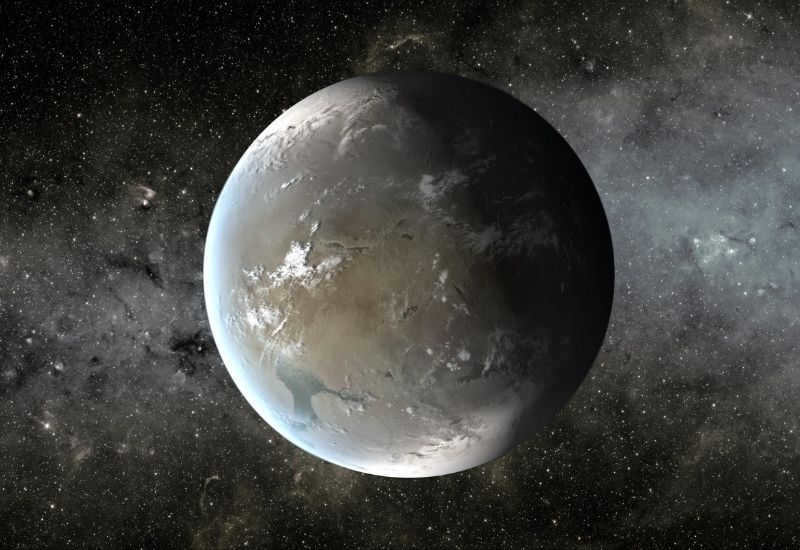
Kapteyn b
Kapteyn b is one of the most extensively researched exoplanets to date. It orbits the star Kapteyn, which is located 13 light years away from Earth. Scientists have classified it as a Super-Earth. It is noteworthy that the planet maintains a temperature range of -50 to 10 degrees Celsius on its surface, making it potentially habitable for less demanding life forms.
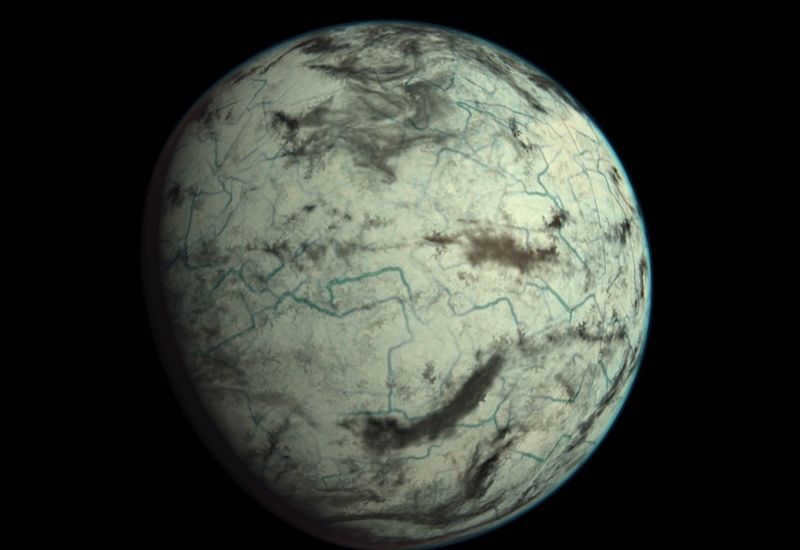
Nonetheless, there is scientific evidence suggesting that the exoplanet possesses an atmosphere of sufficient density to evenly disperse heat across its surface, thereby inhibiting the unilluminated side from reaching temperatures below the dew point.
Wolf 1061c – The Super Earth in the Serpentor constellation
Situated approximately 14 light-years away from our solar system, Wolf 1061c is classified as a potentially habitable exoplanet. Being a Super Earth, it shares similarities with other exoplanets in terms of its composition and size. The vicinity of the Serpentor constellation adds to its intrigue and allure, making it a fascinating subject for astronomers and space enthusiasts alike.
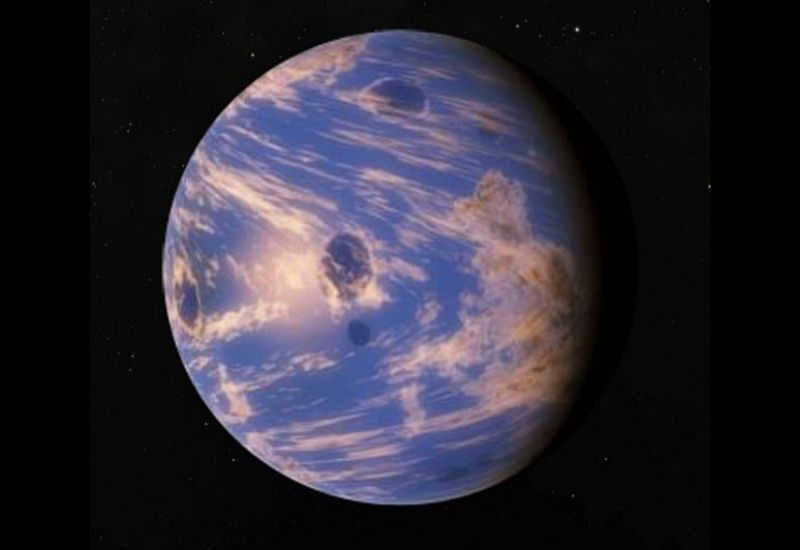
Wolf 1061c is situated on the outermost edge of the habitable zone, in close proximity to its star. This positioning suggests that the planet may lack its own rotation and instead be permanently fixated with one side facing the star. Despite this, there is speculation that the transition area between the illuminated side of the planet and the shaded side could potentially support life, or at the very least, be conducive to life.
Gliese 667C f
Gliese 667 is positioned at a distance of 23 light-years from our planet. Gliese 667C f, residing in the star’s habitable zone, holds a central position and completes its orbit around the star in approximately 39 days.
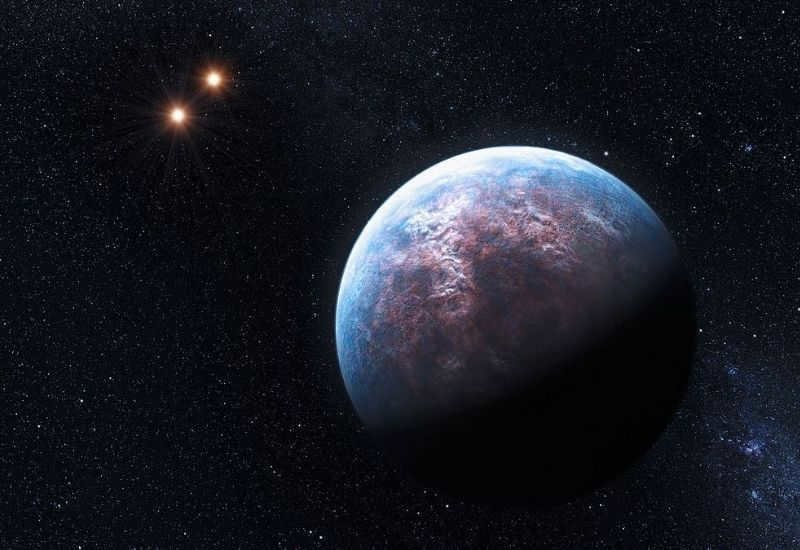
Kepler-442 b
Situated at a distance of 1,120 light-years from our planet, Kepler-442 b is a fascinating celestial body. With a star that is nearly half the size of the sun, this planet exceeds the size of Earth by 1.3 times. While there is still much to learn about Kepler-442 b, its luminosity and proximity to its star bear a striking resemblance to our own planet, leading scientists to speculate that it could potentially support life.
Gliese 667C s
Gliese 667C s is an exoplanet that is in close proximity to Earth and is considered to be one of the nearest habitable planets. Located just 23 light-years away from our solar system, it has garnered significant interest from scientists.
According to scientific research, Gliese 667C s has a temperature similar to that of Earth. However, unlike our planet, it does not rotate on its own axis. Instead, it remains permanently fixed with one side always facing its star.
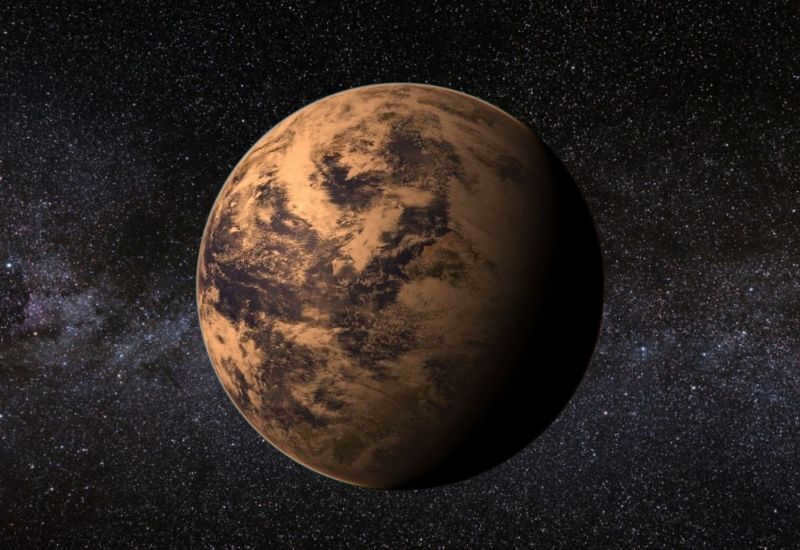
Other exoplanets of interest
In addition to the potentially habitable exoplanets, there are some remarkable ones that deserve attention:
- SWEEPS-11. – holds the record for being the most distant exoplanet from the solar system. It is located 27,700 light-years away. While scientists are still working on confirming the existence of a planet 3,700,000,000,000 light-years from the Sun, SWEEPS-11 remains the farthest confirmed exoplanet.
- Proxima Centauri b – is the nearest exoplanet to Earth, with a distance of only 4.25 light-years.
- OGLE-2016-BLG-1195Lb. – is a massive chunk of ice. not only does its surface consist entirely of ice, but the planet’s interior is also composed entirely of frozen water. This is possible due to the planet’s temperature, which never exceeds -190 degrees Celsius.
- On KELT-9b. the situation is quite the opposite. The surface of the planet experiences an average temperature of approximately 4.5 thousand degrees (only 1000 degrees cooler than the surface of the Sun). Scientists predict that over time, under the extreme heat, the planet will ultimately self-destruct.
- GJ 1214b – a planet entirely enveloped by water. Based on initial scientific analysis, the planet’s oceanic depths could potentially reach over 1.5 thousand kilometers (for comparison, the Mariana Trench reaches a depth of 11 km).
- Kepler-16b is a unique planet that revolves around a binary star system, a phenomenon that scientists have yet to fully comprehend.
- PSR J1719-1438b is an extraordinary planet composed entirely of diamond, a fascinating discovery in the realm of celestial objects.
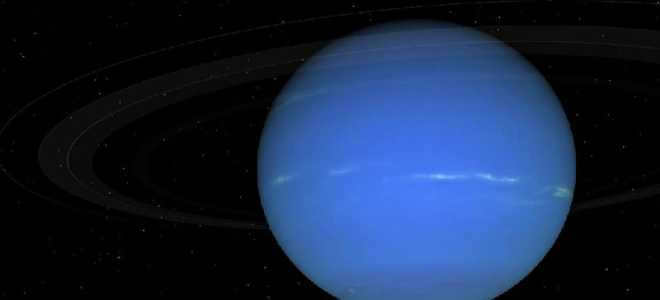
Neptune should be given special consideration. It is widely recognized as the farthest planet from the Sun within our solar system, ranking as the eighth planet. Despite being a gas giant, Neptune possesses a multitude of captivating and unparalleled characteristics. However, let us discuss each aspect in a systematic manner.
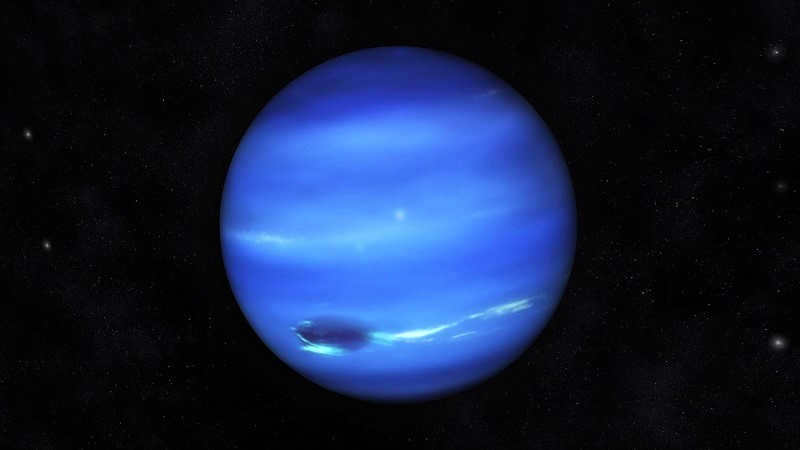
Distinctive Features of the Planet
It is important to note that Neptune shares a similar composition to its neighboring planet Uranus, setting them apart from the other gas giants. In fact, these two planets are often classified as a separate category known as ice giants.
Interestingly, they both have a mass of 1.02×10²⁶kg. This makes Neptune’s mass 17.2 times larger than that of Earth, making it the third largest planet in terms of mass.
However, when it comes to size, Neptune ranks fourth with an equatorial radius of 24,764 kilometers, which is four times larger than Earth’s radius. Furthermore, its internal structure is also similar to that of Uranus:
- The atmosphere is divided into upper clouds and lower layers consisting of hydrogen, helium, and methane;
- Neptune has a frigid outer layer and a hot, dark inner region.
- The rocky ice core of Neptune contains elements like iron, nickel, and various silicates. Additionally, the central region experiences extreme pressure of up to 7 Mbar and temperatures exceeding 5100 degrees Celsius.
Rotation and Orbit
Scientists estimate that Neptune is, on average, 4.55 billion kilometers away from the Sun and 4.3-4.6 billion kilometers away from Earth.
Recently, on July 12, 2011, Neptune completed one full orbit around the Sun, which lasted 165 Earth years.
Neptune rotates on its axis every 16 hours. However, a complete rotation at the equator takes 18 hours, while at the poles it is slightly faster at 12 hours.
It has been discovered that the orbit of the planet is elliptical and has an inclination of 1.77 degrees with respect to Earth. Additionally, its eccentricity is 0.011.
As a result, the planet undergoes seasonal variations akin to those experienced on Earth and Mars. However, each season lasts approximately forty years because of its lengthy orbital period.
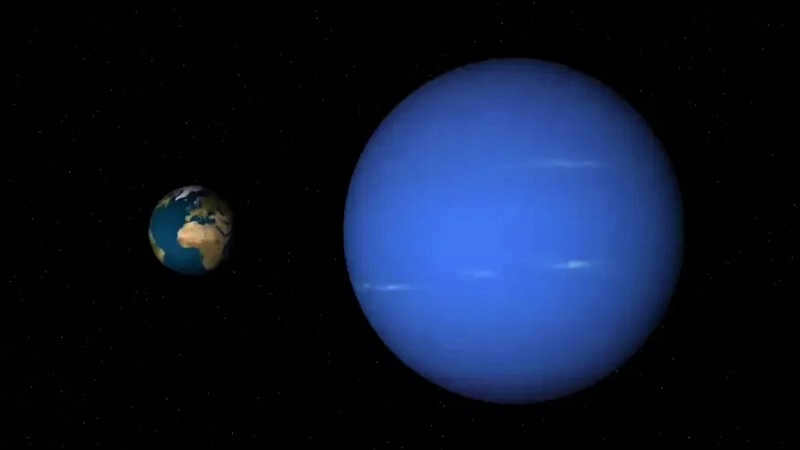
Characteristics of the Atmosphere and Temperature on Neptune
Neptune’s atmosphere, similar to Saturn and Jupiter, is primarily composed of hydrogen and helium, along with hydrocarbons, methane, and presumably nitrogen. However, Neptune’s atmosphere also contains a significant amount of ice, including water, ammonia, and methane. Additionally, the planet’s subsurface is predominantly composed of a mixture of rock and ice.
Interestingly, the blue hue of Neptune is a result of the presence of methane in its upper atmospheric layers.
The atmosphere of Neptune can be divided into several regions, including the troposphere, tropopause, stratosphere, thermosphere, and exosphere. However, it is commonly divided into the lower troposphere and the higher stratosphere. Notably, the temperature decreases as altitude decreases within Neptune’s atmosphere.
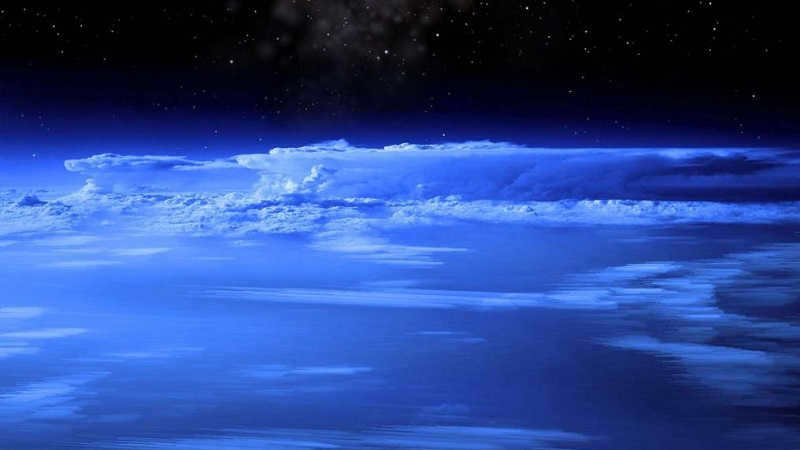
According to some approximations, the upper layers of the planet experience temperatures as low as -220 degrees Celsius, while its core reaches scorching temperatures of 7000-7100 degrees.
As of now, scientists have been unable to provide a definitive explanation for the unusually high temperature of the thermosphere. The sun alone is incapable of generating such heat. Several hypotheses have been proposed to explain this phenomenon. One suggests that ions from the planet’s magnetic field interact with atmospheric particles, leading to their heating. Another proposes that the dissipation of gravitational waves from deep within the planet contributes to the rise in temperature.
In addition to these factors, Neptune emits more energy than it receives from the Sun, indicating the presence of an internal heat source that adds 161% to its total heat budget.
Climate
Neptune stands out as the solitary gas giant where one can observe the presence of cloud shadows. Moreover, its atmosphere boasts the most formidable winds, reaching speeds of 600 km/s.
Despite its considerable distance from its host star, the planet possesses sufficient energy to generate the swiftest winds within the entire system. However, the precise explanation for this phenomenon remains elusive, though it is possible that in the future scientists will gain a deeper understanding of this matter.
In contrast to its celestial neighbor Uranus, Neptune exhibits meteorological activity. One of its distinguishing characteristics is its unpredictable weather, which is closely linked to the substantial fluctuations in wind patterns and the occurrence of storms.
As previously stated, the atmosphere is filled with powerful gusts of wind. Primarily, these gusts blow in the opposite direction of the planet’s rotation. However, in the highest latitudes, they align. This phenomenon is actually a defining characteristic of surface air flow activity.
The axis tilt leads to the formation of areas with high temperatures.
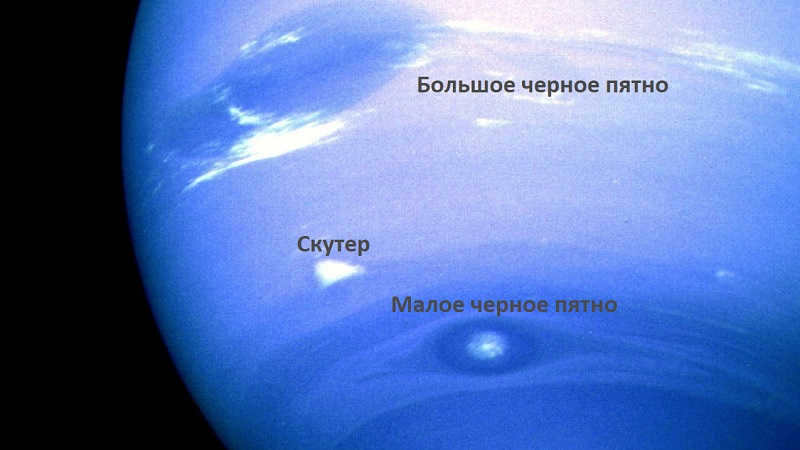
Furthermore, cloud bands are affected by seasonal variations. For instance, in the southern hemisphere of the planet, an increase in cloud bands is observed during a specific season.
Moreover, multiple cloud formations have been documented. Notably, storms such as Scooter, Large, and Small dark spots have garnered attention. Additionally, dark spots have been spotted predominantly in the troposphere at lower altitudes compared to bright and visible clouds.
The Surface of Neptune
There are several key points to consider about Neptune’s surface:
- It covers an area of approximately 7.6 billion square kilometers.
- The density of the surface is about 1.6 grams per cubic centimeter.
- The free-fall acceleration on Neptune’s surface is approximately 11.15 meters per second.
- However, it is important to note that the surface of Neptune is not solid, making it impossible to land any vehicle on it.
Neptune’s Moons and Rings
There are currently 14 known moons orbiting Neptune. Interestingly, only one of them, called Triton, is large enough to have a spherical shape. It is worth mentioning that Triton was actually discovered 17 days after the planet itself was first observed.
What’s fascinating about Triton is that it has a retrograde orbit and possesses an atmosphere, similar to the moons Io and Titan. It is possible that beneath its icy surface, there may be an ocean hidden. Scientists predict that in the future, Neptune’s gravitational forces will cause Triton to collide with the planet, ultimately leading to its destruction. As Triton gradually spirals towards Neptune due to tidal acceleration, a massive ring will form upon impact.
Thanks to the Voyager 2 spacecraft, additional moons were discovered over time. These moons have irregular shapes and relatively small masses.
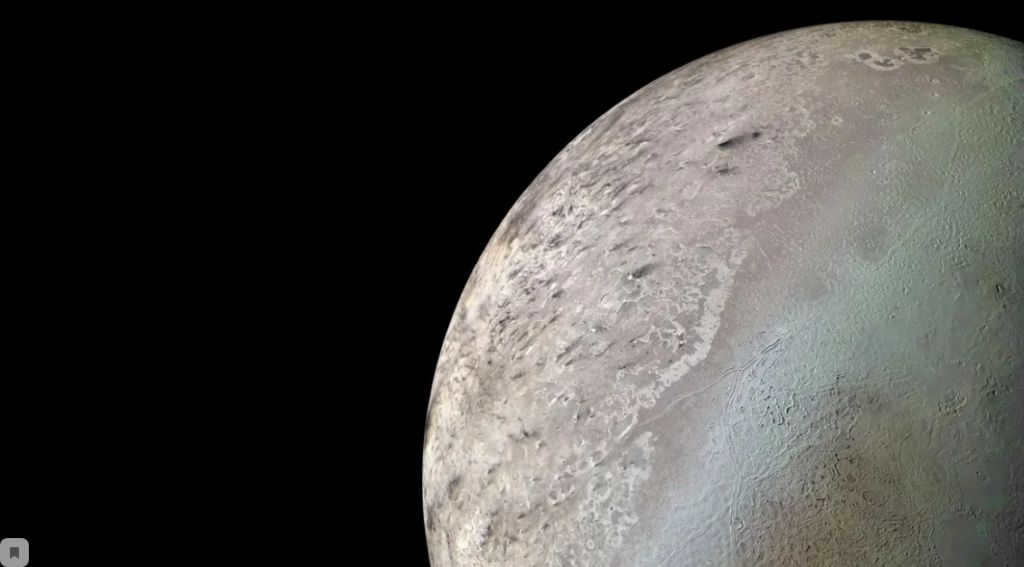
However, there is another noteworthy celestial body. Nereid. Unlike all other known satellites in the Solar System, it possesses the highest orbital eccentricity, which amounts to 0.75.
It is worth mentioning that apart from the aforementioned ones, there exist the following natural satellites: Naiad, Thalassa, Despina, Galatea, Larissa, Hippocampus, Proteus, Galimeda, Psamapha, Sao, Laomedea, and Neso. They are arranged in the order of their discovery.
Neptune also boasts a ring system. Of course, it is not comparable to Saturn’s rings. However, it does have rings. Most likely, they consist of ice particles that are coated with silicates or carbonaceous material.
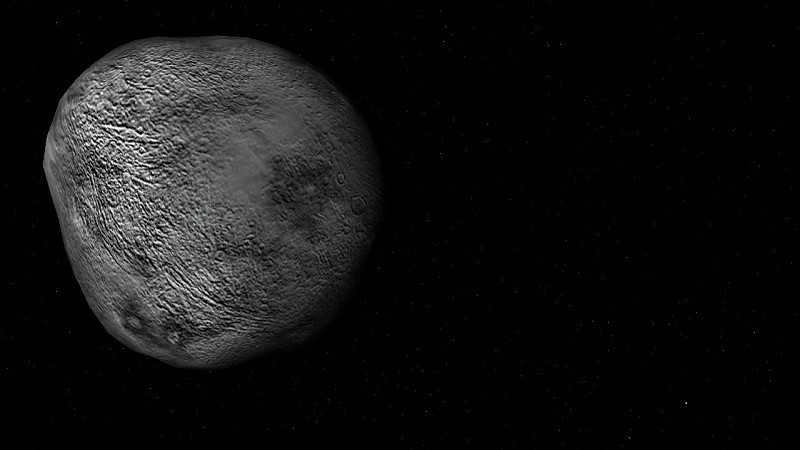
Fascinating Trivia
- Neptune acquired its name as a tribute to the ancient Roman sea god.
- The magnetosphere and magnetic field exhibit a significant tilt of 47 degrees in relation to the planet’s axis. This tilt may have been caused by the tidal forces within Neptune’s inner regions. Additionally, the magnetosphere’s tail extends over 72 Neptunian radii.
- Similar to Jupiter’s famous Great Red Spot, Neptune boasts its own notable feature known as the Great Dark Spot.
- Neptune possesses a faint ring system composed of individual fragments.
- Despite their considerable distance, Neptune exerts a strong gravitational influence on the Kuiper belt.
- Within the Lagrange points, Neptune captures a significant number of Trojan asteroids, which likely formed alongside the planet.
- The planet undergoes a visible retrograde motion once every 367 days during terrestrial observations.
- When exoplanets with a similar mass to Neptune are discovered, it is often used as a concise and descriptive comparison.
Lagrange point – a location within a system of two massive bodies where a third, smaller body experiences the gravitational force from the first two bodies and remains stationary in relation to them. It is essentially a region of gravitational stability.
In actuality, the naked eye cannot detect Neptune from Earth. However, when using a powerful telescope, it can be observed as a small star due to its stellar magnitude of +8.
Telescopic observations have not greatly contributed to the understanding of the planet. However, the utilization of spacecraft and the development of adaptive optics have allowed for the gathering of a certain amount of data and material.
Neptune was the first planet to be discovered through mathematical calculations. It was officially identified on September 23, 1846, as a result of unexpected alterations in Uranus’ orbit. Initially, scientists hypothesized that these changes were due to the gravitational influence of another planet, leading to the discovery of Neptune itself. Subsequently, its moons, most notably Triton, were also found.
Neptune was only explored by a single spacecraft, Voyager 2, back in 1989. The knowledge we will gain about this planet in the future remains an enigmatic puzzle for all of humanity.
